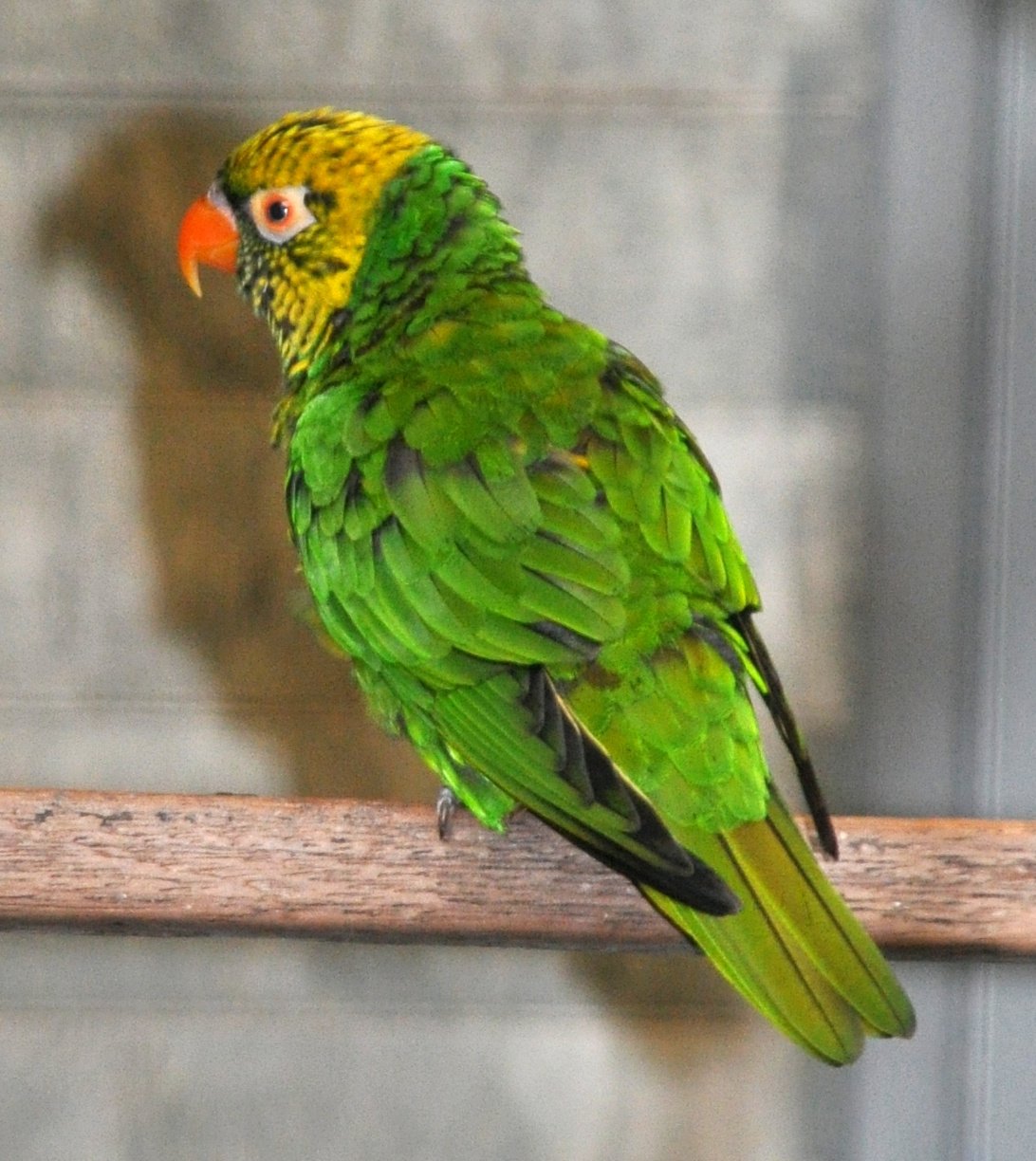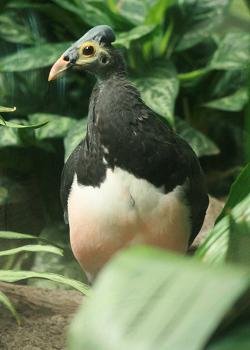 Most parrot aficionados know of the Meyer’s Parrot, however the lovely inexperienced lorikeet bearing the identical “first name” is comparatively unstudied within the wild, and not generally saved right here within the USA. The Meyer’s Lorikeet (Trichoglossus flavoviridus mayeri), a subspecies of the Yellow-and-Green Lorikeet, differs from many associated species in each coloration and social habits. A forest-dweller confined to a single island, this distinctive bird deserves the eye of aviculturists now, whereas wild populations are nonetheless comparatively steady.
Most parrot aficionados know of the Meyer’s Parrot, however the lovely inexperienced lorikeet bearing the identical “first name” is comparatively unstudied within the wild, and not generally saved right here within the USA. The Meyer’s Lorikeet (Trichoglossus flavoviridus mayeri), a subspecies of the Yellow-and-Green Lorikeet, differs from many associated species in each coloration and social habits. A forest-dweller confined to a single island, this distinctive bird deserves the eye of aviculturists now, whereas wild populations are nonetheless comparatively steady.
Table of contents
Description
Three shades of inexperienced coloration the plumage of the 8-inch-long Meyer’s Lorikeet. The breast feathers and these behind the attention are tipped with yellow, and the invoice is vibrant orange. While missing the “flamboyant” reds and blues usually related to lorikeets, it’s fairly spectacular in look.
Range
The Meyer’s Lorikeet is endemic (discovered nowhere else) to Sulawesi, in Indonesia’s Greater Sunda Island chain. Sulawesi lies at a singular crossroad the place animals originating in Australia and these from mainland Asia are discovered collectively. Over half of the island’s 125+ mammal species are endemic and most, such because the Anoa, Cuscus and Babirusa, are fairly uncommon and not well-known.
 Although birds are extra cell than mammals, 34% of Sulawesi’s 400+ species “stay put”, and are discovered nowhere else on earth. Perhaps probably the most distinctive of those is the Maleo, the one bird that incubates its eggs by burying them in sand, in “crocodile-like” trend (please see photograph). Females take a look at the soil’s temperature with specialised sensors within the invoice, however aside from adjusting the quantity of canopy provide no maternal care. Maleo chicks emerge from their subterranean nests well-able to fly and fend for themselves.
Although birds are extra cell than mammals, 34% of Sulawesi’s 400+ species “stay put”, and are discovered nowhere else on earth. Perhaps probably the most distinctive of those is the Maleo, the one bird that incubates its eggs by burying them in sand, in “crocodile-like” trend (please see photograph). Females take a look at the soil’s temperature with specialised sensors within the invoice, however aside from adjusting the quantity of canopy provide no maternal care. Maleo chicks emerge from their subterranean nests well-able to fly and fend for themselves.
Habitat
Meyer’s Lorikeets are restricted to mountainous forests (please see photograph), the place they reside at elevations of 1,700-6,000+ ft. The many shades of inexperienced that coloration their plumage render these arboreal feeders tough to watch among the many foliage.
They additionally seem in lowland areas the place forests stay intact, and will typically enterprise out into open nation when favored flowers are in bloom. However, each older and present accounts point out that heavy forest cowl is crucial Meyer’s Lorikeet habitat.
These shy however noisy birds are sometimes noticed within the firm of gaily-colored Ornate Lorikeets – fairly a sight, I think about!
Conservation
Meyer’s Lorikeet populations seem steady, however their standing has not been effectively studied. Mountainsides inside their vary stay largely forested, which is an efficient signal. However, like all island endemics, they’re particularly weak to habitat loss and different disturbances. The species is listed on Appendix II of CITES.
Meyer’s Lorikeets in Captivity
 Meyer’s Lorikeets should not widespread in zoos or non-public collections within the USA, however have been bred by aviculturists in Europe and Asia. They are as “food oriented” as their family members, however are considerably shy initially and much less more likely to hand feed instantly.
Meyer’s Lorikeets should not widespread in zoos or non-public collections within the USA, however have been bred by aviculturists in Europe and Asia. They are as “food oriented” as their family members, however are considerably shy initially and much less more likely to hand feed instantly.
Although lories and lorikeets are notoriously tough to deal with communally, particularly through the breeding season (please see the article under), Meyer’s Lorikeets could typically be bred in small teams. They are greatest housed in an outside aviary (or, in chilly climate, a bird room) that’s geared up with a drain to permit for cleansing by way of hose. Spacious quarters, effectively stocked with branches and different diversions, are important to the well-being of all parrots, however particularly the very energetic and acrobatic lorikeets.
Loud shrill calls (please click here for a recording) are a truth of lorikeet life, and needs to be considered by potential keepers.
Diet
Feeding is a significant consideration within the husbandry of all lorikeets; none will thrive except supplied with a extremely nutritious, carefully-planned weight-reduction plan.
Lory nectar blended with a little bit of molasses and mushy meals can kind the idea of their weight-reduction plan, however this have to be supplemented by different meals.
All kinds of fruits and greens, together with apples, pears, peaches, oranges, star fruit, kiwi, figs, banana, mushy carrots, corn, Swiss chard, dandelion, and as many others as might be accepted, needs to be provided each day. Meyer’s Lorikeets will even take small quantities of millet and canary seed.
 A paste of arduous boiled eggs (floor with shells), egg meals, cottage cheese and cooked carrots, sweetened with molasses, will present obligatory protein. Try mixing in some mealworms, crickets and different bugs as effectively – I’ve discovered that some lorikeet species will settle for these.
A paste of arduous boiled eggs (floor with shells), egg meals, cottage cheese and cooked carrots, sweetened with molasses, will present obligatory protein. Try mixing in some mealworms, crickets and different bugs as effectively – I’ve discovered that some lorikeet species will settle for these.
Lorikeets could be fussy…you will need to experiment till you discover the right combine or mode of presentation that works greatest in inducing your birds to simply accept the best number of nutritious meals.
